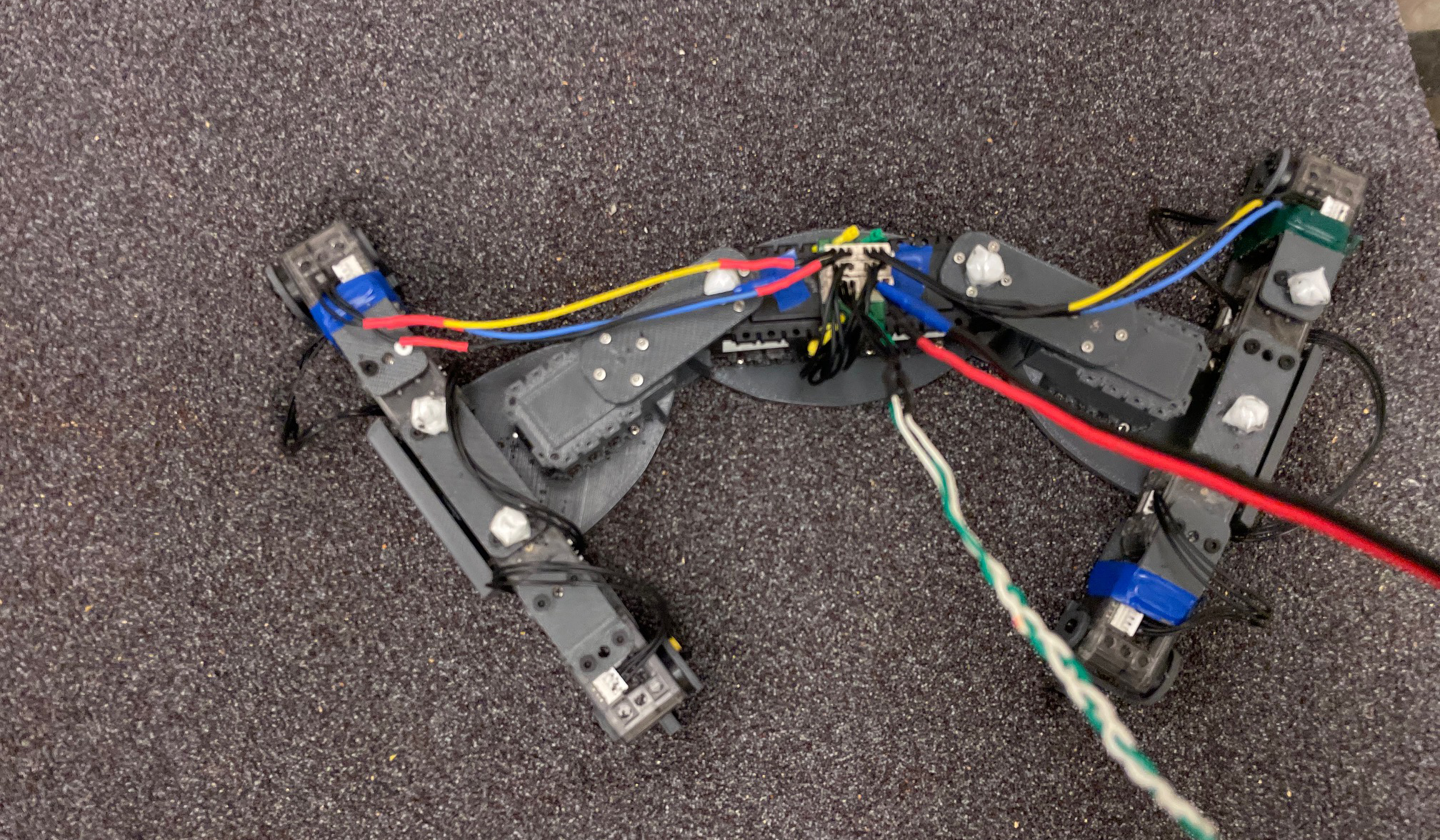2022-06-27 ジョージア工科大学

The researchers’ robophysical model of intermediate lizard species. Credit: Georgia Institute of Technology
プログラムDeepLabCutによるトラッキングビデオを通じて、これらの種が運動する際に多様な波動パターンを行うことを発見しました。
研究者達は、より多くの体重が手足ではなく腹に分散された時、ヘビのような体の動きが、トカゲが必要な場所に行くのに明らかに有利であることを発見しました。トカゲの体の伸び縮みの程度は、体や四肢の動きの協調性に直結しており、体の形と運動様式の間に密接な連続性があることが確認された。さらに、この小さな手足は、推進力としてだけでなく、腹部を地面から持ち上げる際にも重要な役割を果たすこともわかった。
ロボット物理学モデルを用いることで、瓦礫の中を這い回ったり、月や惑星の表面のような地球外の環境で動き回ったりしなければならないような、次世代のロボットにも応用できる原理を開発することができます。
<関連情報>
- https://research.gatech.edu/tiny-limbs-and-long-bodies-coordinating-lizard-locomotion
- https://www.pnas.org/doi/full/10.1073/pnas.2118456119
小さな手足と長い体をコーディネートする:トカゲの陸上遊泳の幾何学的メカニクス Coordinating tiny limbs and long bodies: Geometric mechanics of lizard terrestrial swimming
Baxi Chong, Tianyu Wang, Eva Erickson, Philip J. Bergmann and Daniel I. Goldman
Proceedings of the National Academy of Sciences Published:June 27, 2022
DOI:https://doi.org/10.1073/pnas.2118456119
Abstract
Although typically possessing four limbs and short bodies, lizards have evolved diverse morphologies, including elongate trunks with tiny limbs. Such forms are hypothesized to aid locomotion in cluttered/fossorial environments but propulsion mechanisms (e.g., the use of body and/or limbs to interact with substrates) and potential body/limb coordination remain unstudied. Here, we use biological experiments, a geometric theory of locomotion, and robophysical models to investigate body–limb coordination in diverse lizards. Locomotor field studies in short-limbed, elongate lizards (Brachymeles and Lerista) and laboratory studies of fully limbed lizards (Uma scoparia and Sceloporus olivaceus) and a snake (Chionactis occipitalis) reveal that body-wave dynamics can be described by a combination of standing and traveling waves; the ratio of the amplitudes of these components is inversely related to the degree of limb reduction and body elongation. The geometric theory (which replaces laborious calculation with diagrams) helps explain our observations, predicting that the advantage of traveling-wave body undulations (compared with a standing wave) emerges when the dominant thrust-generation mechanism arises from the body rather than the limbs and reveals that such soil-dwelling lizards propel via “terrestrial swimming” like sand-swimming lizards and snakes. We test our hypothesis by inducing the use of traveling waves in stereotyped lizards via modulating the ground-penetration resistance. Study of a limbed/undulatory robophysical model demonstrates that a traveling wave is beneficial when propulsion is generated by body–environment interaction. Our models could be valuable in understanding functional constraints on the evolutionary processes of elongation and limb reduction as well as advancing robot designs.



